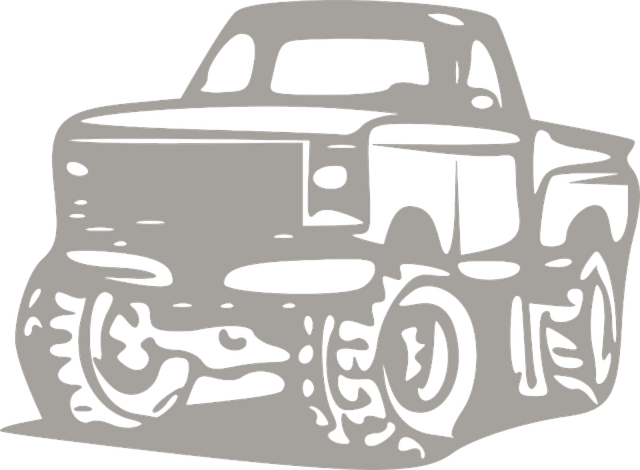Towing chains, critical components for 4×4 vehicles like RGVs, enhance traction and stability when pulling heavy loads off-road. Selection involves considering weight capacity, vehicle/load compatibility, terrain type, and chain composition. Installation, maintenance, and proper attachment techniques are vital skills for safe off-road adventures. Regular inspection, lubrication, and tension checks prevent slippage, overloading, and breakage. Upgrading with durable, lightweight chains improves performance and safety on rugged terrain. Always prioritize quality and fitment as per 4×4-parts-rgv guidelines for optimal towing capabilities.
“Unleash the full potential of your 4×4 or RGV (Road Go Vehicle) with a comprehensive guide on towing chains. These essential components are vital for navigating challenging terrains and towing heavy loads. From understanding the fundamental parts to choosing, installing, and maintaining the perfect chain for your vehicle, this article covers it all. Learn safety tips for secure attachments and discover top chain upgrades to enhance your off-road experience. Optimize your 4×4’s capabilities with the right RGV parts.”
- Understanding Towing Chains: Essential Components for 4×4 Vehicles
- Choosing the Right Chain: Factors to Consider for RGV (Road Go Vehicle) Owners
- Installation and Maintenance: A Step-by-Step Guide for 4×4 Enthusiasts
- Safety First: Tips for Securely Attaching and Using Towing Chains
- Common Issues and Troubleshooting: Addressing Challenges with Towing Chains
- Upgrading Your 4×4: Top Chain Options and Their Benefits
Understanding Towing Chains: Essential Components for 4×4 Vehicles

Towing chains are a vital component for any off-road enthusiast, especially those relying on their 4×4 vehicles for rugged terrain navigation. These chains, often made from high-strength steel, serve as an extension of the vehicle’s drive train, enabling it to pull or tow heavy loads with enhanced traction and stability. In the world of 4×4 parts, RGV (Redesigned Gear Vehicle) owners particularly benefit from well-maintained towing chains, which can be the difference between a smooth off-road adventure and a stranded vehicle.
Understanding their mechanics is crucial. Towing chains attach to the vehicle’s differential or axle and wrap around the chain of another vehicle (or a winch) for towing. The length and strength vary based on the intended use, with some designed for light duty and others capable of handling extreme loads. When choosing 4×4 parts, RGV owners should consider factors like chain composition, pin construction, and overall durability to ensure their vehicles are prepared for any off-road challenge.
Choosing the Right Chain: Factors to Consider for RGV (Road Go Vehicle) Owners

When it comes to selecting the ideal towing chain for your RGV (Road Go Vehicle), several factors should guide your decision. Firstly, consider the weight capacity and the type of vehicle or load you intend to tow. Different chains have varying load ratings, so ensuring it matches your needs is paramount. Additionally, the length and coupling style are essential considerations, especially if you’re planning on connecting multiple vehicles or accessories.
For 4×4-parts-rgv enthusiasts, understanding the terrain and towing conditions is vital. Will you be primarily towing in urban settings or off-road? The environment can influence chain wear and tear. Moreover, the compatibility of the chain with your RGV’s existing hardware should be checked to ensure a secure and safe connection without any modifications.
Installation and Maintenance: A Step-by-Step Guide for 4×4 Enthusiasts

Installing and maintaining towing chains is a crucial skill for 4×4 enthusiasts, ensuring their vehicles are prepared for any off-road adventure. Here’s a step-by-step guide tailored for passionate 4×4 owners. Begin by selecting the right chain for your vehicle, considering factors like weight capacity and compatibility with your 4×4 parts RGV (off-road vehicle). Ensure it meets industry standards for safety and quality.
Next, carefully clean and inspect both the vehicle’s hitch and the towing chain. Rust and debris can compromise integrity. Use specialized tools to connect the chain to the hitch, double-checking all bolts are securely fastened. Regular maintenance involves inspecting for wear, tightening connections, and lubricating the chain to prevent corrosion. Always refer to your vehicle’s manual for specific guidelines on installation and remember that proper fitment is key to safe towing capabilities with your 4×4 parts RGV.
Safety First: Tips for Securely Attaching and Using Towing Chains

When it comes to towing, especially with robust vehicles like 4x4s, using towing chains is a crucial safety measure. Before attaching and utilizing these chains (4×4-parts-rgv), ensure a thorough understanding of the process to prevent accidents and damage. Begin by inspecting both the vehicle and the chain for any signs of wear or stress. Ensure the chain is properly lubricated for smooth operation, and check that all connectors are secure and functioning correctly.
Proper attachment is key; follow manufacturer guidelines closely. Position the chains under the vehicle’s frame in a crisscross pattern, ensuring even weight distribution. Use all provided attachments points, and double-check connections with a partner to guarantee security. Remember, a well-fitted towing chain can mean the difference between a safe journey and a potentially hazardous one, especially in challenging terrains that 4x4s are designed for.
Common Issues and Troubleshooting: Addressing Challenges with Towing Chains

Towing chains, while a vital component for 4×4 vehicles, can present several common issues that owners should be aware of. One of the most frequent problems is chain slippage, which can occur due to improper tension or damage to the links. Regular inspection and maintenance are key; checking for wear, stretching, or corrosion before each trip can help prevent unexpected breakdowns. If slippage does happen while towing, immediately reduce speed and apply the parking brake to avoid potential hazards.
Another issue worth noting is the risk of chain breakage, often caused by overloading or extreme conditions. To mitigate this, ensure your vehicle’s towing capacity aligns with the load you’re carrying. Always refer to your 4×4-parts-rgv (and manufacturer’s guidelines) for accurate information. Additionally, using high-quality chains rated for heavy-duty use can significantly reduce the likelihood of breakage. Regular cleaning and lubrication also play a crucial role in maintaining the integrity of your towing chain system.
Upgrading Your 4×4: Top Chain Options and Their Benefits

When upgrading your 4×4, choosing the right towing chain is paramount for enhancing both performance and safety. The market offers a plethora of options tailored to specific vehicle types and towing needs. For rugged terrain and extreme off-roading, opt for heavy-duty chains with higher break strengths, designed to withstand intense stress and tough conditions. These chains often feature reinforced links and robust construction, ensuring your vehicle and cargo remain secure during challenging trails.
Incorporating the latest 4×4-parts-rgv can significantly improve your towing capacity and overall driving experience. Lightweight yet durable options are ideal for those who frequently tackle diverse terrains. These chains offer improved maneuverability, reducing strain on your vehicle’s engine and suspension systems. Additionally, look for chains with smart features like easy-link designs, offering quick and efficient installation, a significant advantage when navigating through demanding off-road scenarios.
Towing chains are an indispensable part of owning a 4×4 or RGV, offering vital assistance in various driving conditions. By understanding their components, choosing the right fit, and implementing proper installation and maintenance practices, vehicle owners can maximize their benefits. This guide has equipped readers with the knowledge to navigate through selection, usage, and problem-solving, ensuring safer and more efficient off-road adventures. When upgrading or replacing parts, remember to source high-quality 4×4 parts tailored for RGVs to enhance performance and reliability.



